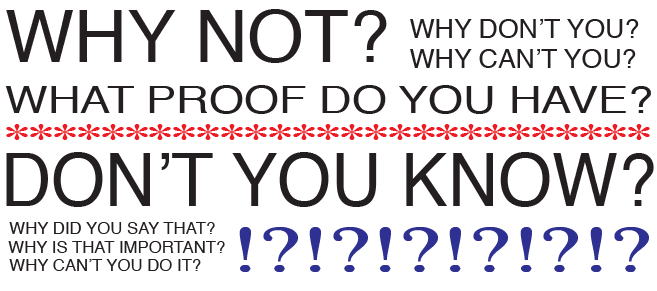Introduction
The New York Times (NYT) is Aggressively Question of the most influential and widely recognized media institutions in the world. With its reputation for investigative journalism and breaking news, it has shaped public opinion for over a century. However, in an age of misinformation, media bias, and political polarization, it is crucial to aggressively question NYT and other mainstream media outlets to ensure we receive accurate and unbiased news.
Questioning does not mean dismissing journalism outright. Instead, it involves critically analyzing information, understanding its sources, and recognizing potential biases. This approach is essential because news organizations, including NYT, operate within a framework influenced by corporate interests, political affiliations, and editorial policies.
This article will explore why and how readers should aggressively question NYT, examine notable case studies where the outlet got it right or wrong, and emphasize the importance of media literacy in today’s digital age. By the end, you will have the tools to become a more informed and discerning news consumer.
2. The Role of NYT in Shaping Public Opinion
A Legacy of Influence
The New York Times has long been regarded as a beacon of journalism, setting standards for investigative reporting and in-depth analysis. It has covered some of the most significant global events, from wars to political scandals, often bringing hidden truths to light. Its Pulitzer Prize-winning journalism has exposed corruption, championed social justice, and informed millions worldwide.
However, with great influence comes great responsibility. The power of NYT extends beyond merely reporting the news—it shapes public opinion and influences political discourse. The way an article is framed, the choice of words, and the stories that receive more attention can significantly affect how the public perceives events.
The Power of Framing and Agenda Setting
Media outlets, including NYT, utilize framing techniques to present stories in specific ways. A subtle change in wording can shift public perception. For example, describing a protest as a “riot” versus a “peaceful demonstration” creates vastly different narratives. The inclusion or exclusion of certain facts also affects how an event is interpreted.
Agenda-setting is another key factor. NYT determines which stories are prioritized on its front pages and homepage. Certain issues may be emphasized, while others are downplayed or ignored. Understanding these dynamics is crucial in aggressively questioning NYT’s role in shaping public discourse.
3. Why and How to Aggressively Question NYT
Understanding Media Bias
No news organization is entirely free from bias. While NYT maintains journalistic integrity, it has been accused of leaning toward certain political ideologies. Recognizing this bias helps readers interpret news critically rather than accepting it at face value.
Political affiliations, corporate funding, and social influences can affect how NYT reports the news. A study of past articles shows a tendency toward liberal perspectives, particularly on issues like climate change, social justice, and economic policies. While these views may align with factual data, it is essential to be aware of their potential influence on storytelling.
Fact-Checking and Source Analysis
To aggressively question NYT, readers should verify facts through multiple sources. Relying solely on one media outlet for information increases the risk of consuming a skewed perspective. Fact-checking platforms like Snopes, PolitiFact, and independent research can help confirm the credibility of news stories.
Additionally, analyzing the sources NYT uses is crucial. Are they quoting government officials, anonymous sources, or industry experts? Cross-referencing with independent reports and primary sources can provide a fuller picture of the truth.
Spotting Misinformation and Omissions
Even credible news sources can spread misinformation or omit key details that could change the context of a story. Scrutinizing headlines, questioning the motive behind a report, and reading beyond the first few paragraphs can reveal nuances that may not be immediately apparent.
Understanding what is left out of a story is just as important as what is included. If a report heavily favors one side without presenting counterarguments, it may not provide a balanced perspective. By actively questioning such narratives, readers can develop a more informed and nuanced understanding of current events.
4. Case Studies: When NYT Got It Right and Wrong
Major Investigations That Changed the World
NYT has been responsible for some of the most groundbreaking journalism in history. Its publication of the Pentagon Papers in 1971 exposed government deception about the Vietnam War. Similarly, its coverage of the Watergate scandal played a significant role in holding political leaders accountable. More recently, its reporting on sexual misconduct in Hollywood helped ignite the #MeToo movement.
These investigative pieces demonstrate NYT’s ability to uncover hidden truths and challenge powerful institutions. However, the outlet has also faced criticism for its reporting errors.
Controversial or Misleading Reports
NYT has had instances where its reporting led to misinformation or misinterpretations. One notable example is its coverage of Iraq’s weapons of mass destruction (WMDs) in the early 2000s. Reports suggested that Iraq possessed WMDs, contributing to the U.S. government’s justification for war. However, these claims were later proven false, leading to widespread criticism of NYT’s role in amplifying unverified intelligence.
Another controversial moment was its coverage of Russiagate, which many argue was exaggerated without sufficient evidence. While the investigation into Russian interference in U.S. elections was valid, some critics believe NYT’s framing of certain aspects contributed to unnecessary public hysteria.
Lessons from Past Coverage
By analyzing these case studies, readers can learn valuable lessons about media consumption. No news source is infallible, and it is always wise to cross-check information, especially when stories involve significant political or global consequences.
5. The Importance of Media Literacy in the Digital Age
With the rise of social media and digital journalism, misinformation spreads faster than ever. Media literacy is crucial in navigating today’s information landscape. Here are key strategies to improve news consumption:
- Diversify Sources: Read news from various publications to gain a well-rounded perspective.
- Identify Opinion vs. Fact: Distinguish between editorials, op-eds, and investigative journalism.
- Question Headlines: Sensationalized headlines often do not reflect the full story.
- Be Aware of Confirmation Bias: Avoid consuming only news that aligns with preexisting beliefs.
By actively questioning media narratives, readers can cultivate a more balanced and informed worldview.
6. Conclusion
Aggressively questioning NYT—or any major media outlet—is not about discrediting journalism but about ensuring accuracy, fairness, and accountability. In a world where misinformation is rampant, critical thinking and media literacy are essential tools for responsible news consumption. By scrutinizing sources, fact-checking claims, and staying informed through diverse perspectives, readers can become more discerning and empowered individuals.





